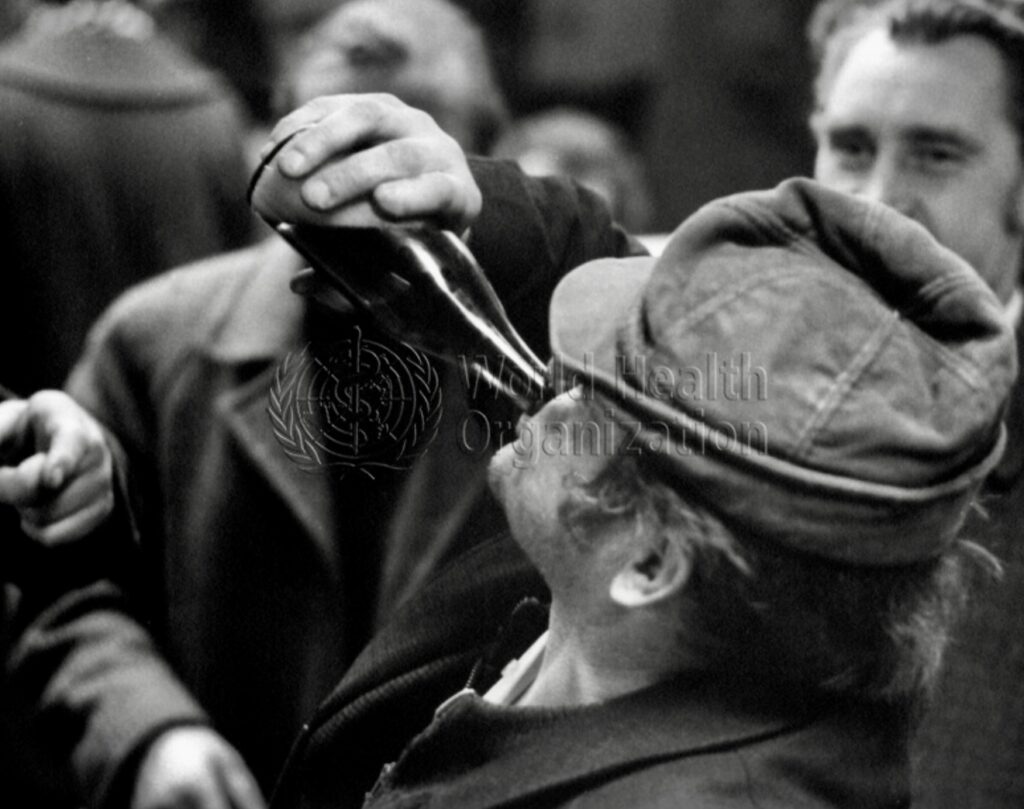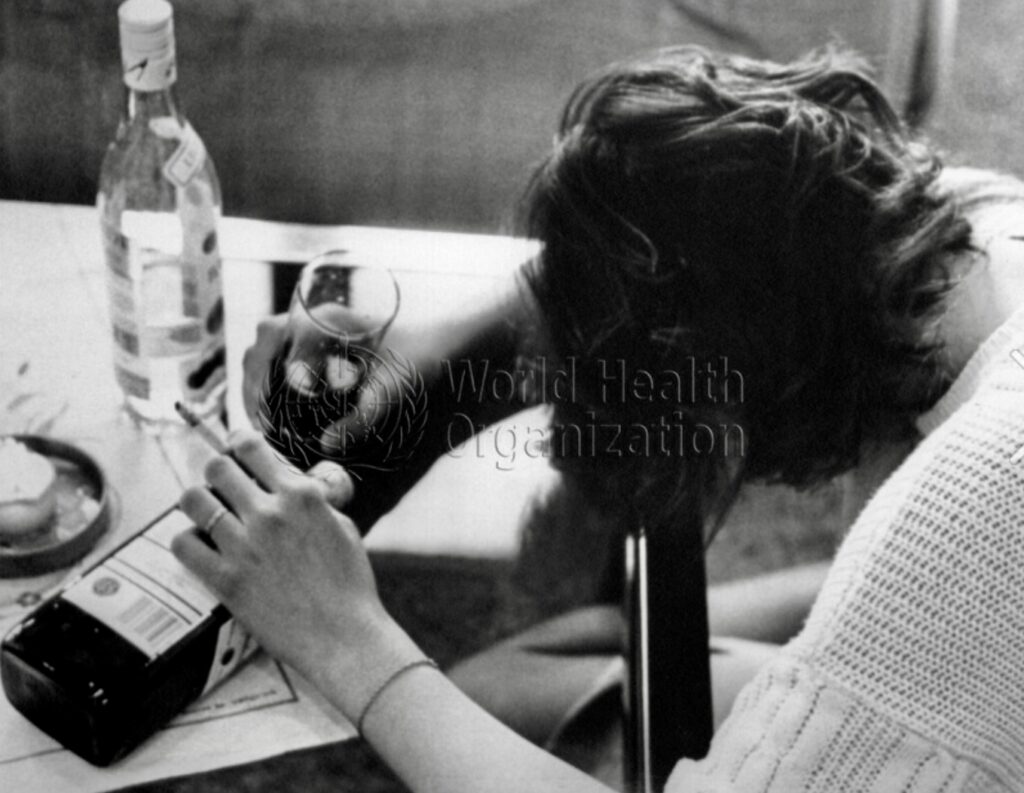By Henrylito D. Tacio
Photos courtesy of WHO
Please answer the following questions honestly with either YES or NO:
Do you lose time from work due to drinking? Do you drink because you are shy with other people? Is drinking affecting your reputation? Have you ever felt remorse after drinking? Have you gotten into financial difficulties as a result of drinking? Does your drinking make you careless of your family’s welfare? Has your ambition decreased since drinking? Do you crave a drink at a definite time daily?
Does drinking cause you to have difficulty sleeping? Has your efficiency decreased since drinking? Is drinking jeopardizing your job or business? Do you drink to escape from worries or trouble? Do you drink alone? Have you ever had a complete loss of memory as a result of drinking? Do you drink to build up your self-confidence? Have you ever been to a hospital or institution on account of drinking?
If you have answered YES to any one of the questions above, you may be an alcoholic. If you have answered YES to any two, the chances are that you are an alcoholic. If you have answered YES to three or more, you are definitely an alcoholic.
“Of the people who drink alcohol, about 10 percent become alcoholics,” notes The Merck Manual of Medical Information. “People who become alcoholics have been regularly using alcohol in excessive amounts over a prolonged period of time and are dependent on alcohol.”

The amount of drinking that takes place on an average day before a person becomes an alcoholic varies widely, but it may be as little as two drinks per day for women and three drinks for men. “Many alcoholics are also binge drinkers, meaning that they may drink five or more drinks on many days and little or none on a few days,” the Merck manual notes.
“Alcohol is the most dangerous drug known to mankind,” writes Dr. Mark S. Gold, author of The Facts About Drugs and Alcohol. And yet, alcohol, like the addictive tobacco, is legal.
“Alcohol is the most frequently abused drug in the world,” informs Dr. Gary Hopkins, director of the Institute for Prevention of Addictions at Andrews University in Michigan. “It is a substance that has been discussed frequently in scientific literature and has been the focus of a large amount of research. Many of those who read media reports regarding the effects of alcohol are confused. Is this a dangerous drug, or is it a miracle potion that reduces the rates of heart attack, a frequent cause of disability and death throughout much of the world?”
An alcoholic beverage, by definition, is any drink that contains alcohol in the form of ethanol. For most canned or bottled beverages, the ethanol content is written on the label as the percentage of alcohol by volume (abv). Other times, it is considered as alcohol proof, which is twice the percentage of abv.
Ethanol is the natural excreta of the fermenting yeast. Sugar is in fruit, grains, sap, and nectar of all plants. Yeasts are ubiquitous. The Babylonians and Egyptians found that if they crushed grapes or warmed and moistened grains, the covered mush would bubble and become a “drink with a kick.”
French microbiologist and chemist Louis Pasteur discovered that yeasts are single-cell, living fungi, and that fermentation is their act of survival. Yeasts can’t get directly until brewers first “malt” their barley: that is, moisten and warm it so that it germinates just enough to release enzymes that convert starches into simple sugar.
As alcohol is a toxin, fermentation is self-limiting. Once alcohol concentration reaches about 14 percent (or the sugar runs out), the multiplying yeasts die, and fermentation ends. A stronger drink requires distillation, in which substances are vaporized and then condensed by cooling.
The origins of distillation are ambiguous. The Arabs get credit not so much for the process but the word. Al-kohl is Arabic for finely ground antimony used as eyeliner, and it came to mean any exotic essence.
Historically, people drank alcohol when they could get it: as food, in place of fetid water, as relief from the misery of life, to chase after pleasure – at births, weddings, and festivals. Dionysian and Bacchanalian were the gods of this merry-making.

Alcohol was not only acceptable; it was esteemed, revered. Jesus Christ used wine to perform his first miracle when he transformed water into wine. At the Last Supper, He imbued it with the symbol of His blood.
“Drinking in itself is not dangerous when done in moderation,” writes Dr. Malaya Pimentel-Santos, in her column, “A Different Drum,” which appeared in Vital Signs. However, provided the drinker is of legal age, not planning to drive, and not suffering from a major medical condition. For a woman who drinks, she should not be pregnant.
“Studies have shown that light to moderate drinking even has the benefit of reducing the risk for coronary heart disease,” Dr. Santos points out. “But heavy drinking is a whole different matter because it can often result in injuries, birth defects, liver damage, and other major health problems.”
In fact, the Old Testament prophets had long issued warnings against excessive drinking. Moses proposed death for rebellious, drunken sons. Islam is traditionally against drinking. The Fourth Sura of the Quran proclaims that alcohol is from the devil and must be avoided.
“Drunkenness has killed more men than all of the history’s wars,” commented American military general John Joseph Pershing, who had been to several wars – and even came to the Philippines in 1899. Abraham Lincoln himself said, “(Alcoholic) drink is a cancer in human society, eating out its vitals and threatening its destruction.”
Around the globe, drinking alcoholic beverages are now a way of life. In the Philippines, for instance, business and the bottle are partners. Some important decisions are made in the drinking spots.
“Alcohol’s continued use and abuse is partly due to the fact that we give it such a high profile in movies, television and advertisements,” Dr. Gold wrote. “Role models such as athletes promote its use in very successful TV commercials. Drinking beer after work is depicted as part of a healthy, robust lifestyle. Other ads show beautiful people drinking in sexy clothing. With such high praise, is it any wonder that people, particularly the young ones, want to drink?”
What these people don’t know is that drinking is hazardous to one’s health. Drinking a large number of alcoholic beverages “depress brain function, resulting in slowed, impaired movements, unsteadiness, and sleepiness,” the Merck manual notes. “As the alcohol is slowly metabolized, the process may reverse, such that a sedated person once again becomes agitated and violent.”
There’s more than that. Alcohol is one of the direct causes of hepatitis and cirrhosis. “The liver is usually able to regenerate after a bout of hepatitis, provided that the use of alcohol is discontinued,” Dr. Gold said.
Women who consume as much as three drinks per week increased their risk of getting breast cancer by a whopping 50 percent, according to a study conducted by Harvard University. The researchers also found the same 50% risk in moderate drinkers and a 100% increase a drink or more per day.
Now, if you must drink, at least cut-down. “We realize that it can be difficult to stop drinking once you have become accustomed to it,” wrote Walt Manor and Frank Mercurio in Booze Blues. “Socially, a non-alcoholic beverage makes a different statement. Perhaps it’s a statement you don’t feel comfortable with, one that says you care about your health.”
If you do drink, “don’t drink an empty stomach,” Manor and Mercurio suggest. The reason: it increases the potency of the alcohol. “Drinking plain water before drinking may help to fill you up, flush you out, and decrease your desire for alcohol. If you drink at a social event, have no more than one drink per hour.”
Remember the words of Greek philosopher Socrates? He said, “If we pour ourselves immense draughts, it will be no longer time before both our bodies and our minds reel.”
Let’s drink to that!

